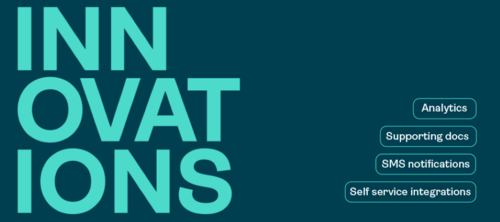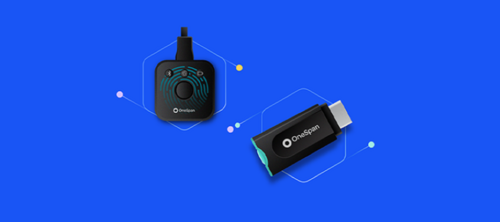How it Works
Leverage multi‑factor authentication, risk analytics, and app security
See how OneSpan’s Intelligent Adaptive Authentication helps financial institutions:
- Improve fraud detection and prevention
- Meet strict compliance requirements
- Drive growth goals through better digital experiences for customers
Fully Optimize the Customer Experience
Deliver the best user experience with frictionless authentication
OneSpan’s Intelligent Adaptive Authentication applies a precise level of security for each unique customer interaction. No more, no less. This provides the best possible user experience.
Intelligent Adaptive Authentication accomplishes this through real-time analysis of vast amounts of user, device, and transaction data, resulting in a risk score. This score triggers automated security workflows that apply the exact security required.
OneSpan offers the deepest integration and visibility into the mobile channel. This ensures accurate fraud detection and fewer false positives – as well as more effective protection in the rapidly growing mobile channel.
Reduce Account Takeover Fraud
Drive down ATO fraud with omni channel detection and authentication orchestration
OneSpan Intelligent Adaptive Authentication protects against account takeover fraud by combining multi factor authentication (MFA) with a powerful risk analytics engine. The risk engine is powered by machine learning for more accurate fraud prevention in real time.
Intelligent Adaptive Authentication collects comprehensive data on the integrity of the user's device and mobile apps, behavior, transaction details, and other key contextual information to better understand risk and orchestrate the appropriate level of security.
Higher risk activity automatically initiates additional authentication requirements. An analysis of vast, disparate data means more accurate fraud detection and fewer false positives.
Meet Strict Regulations Faster
Benefit from pre-configured fraud models, rule sets, and integrated security features
Intelligent Adaptive Authentication is a powerful, yet easily deployed, cloud solution that helps fast-track compliance with regulations like PSD2. With pre-configured rule sets and predictive machine learning models tuned for specific applications such as mobile, online, and corporate banking, the solution accelerates compliance from day one.
Unlike other providers, OneSpan’s solution includes a risk analytics engine with pre-configured models, extensive authentication options, and mobile app security. Intelligent Adaptive Authentication is a single, fully integrated solution backed by the most experienced industry support.
Analyst Report
KuppingerCole Report on OneSpan Intelligent Adaptive Authentication
This report provides recommendations to cybersecurity professionals on how to address the challenges of advancing cybercrime strategies and evolving legislation while protecting financial assets.
Better Assess Mobile Channel Risks
Establish trust by improving visibility into the mobile channel
OneSpan's Intelligent Adaptive Authentication solution offers the deepest line-of-sight into the mobile channel. It does this by leveraging extensive device, app, and user data to accurately score the level of risk.
With this comprehensive mobile risk assessment, Intelligent Adaptive Authentication can identify new devices, remove compromised devices, and even transfer trust from one device to another.
Get started with Intelligent Adaptive Authentication
OneSpan can help prevent account takeover and other fraud while meeting compliance goals and ensuring the best possible digital experience
OneSpan recognizes and commits to working on the mitigation and elimination of bias in algorithms related to facial recognition/comparison -- OneSpan Statement on Facial Recognition/Comparison Bias.






